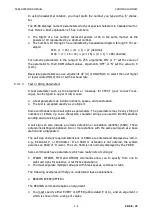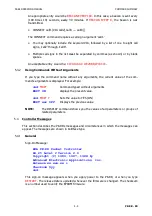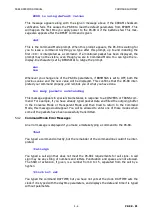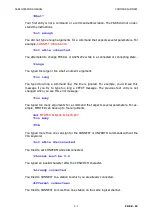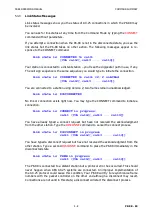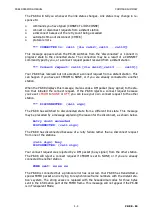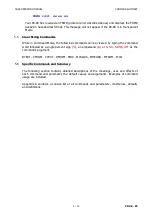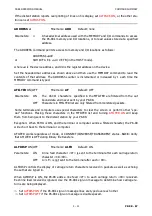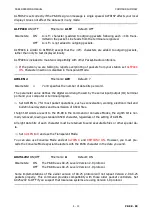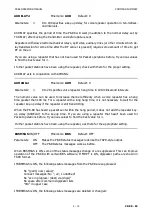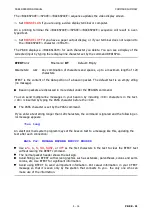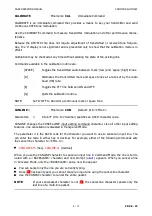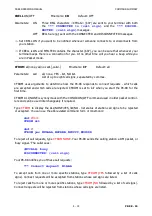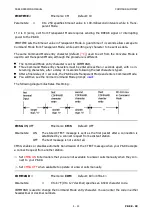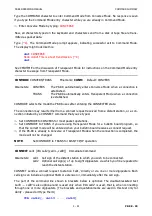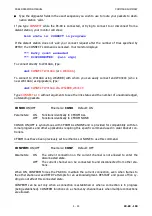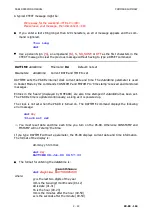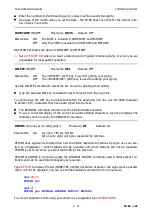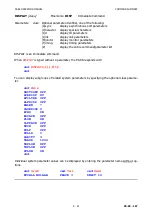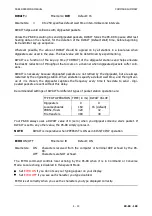
PK-88 OPERATING MANUAL
COMMAND SUMMARY
5 - 18
PK-88 - 93
CANPAC
n
Mnemonic:
CANP
Default: $19 <CTRL-Y>
Parameters:
n
0 to $7F (0 to 127 decimal) specifies an ASCII character code.
CANPAC changes the CANCEL-PACKET input editing command character.
The parameter
n
is the ASCII code for the character you want to type in order to cancel an input
packet.
⇒
You can enter the code in either hex or decimal.
When you cancel a packet in Converse Mode, the line is terminated with a <BACKSLASH> charac-
ter and a new line.
⇒
You can only cancel the packet that is currently being entered.
Once you have typed the send-packet character, or waited PACTIME (if CPACTIME is enabled), the
packet cannot be canceled even if it has not been transmitted.
Like other input editing features, packet cancellation is disabled in Transparent Mode.
The CANCEL-PACKET character also cancels the display output in Command Mode. If you are in
Command Mode and type the CANCEL-PACKET character, any characters that would be typed on
the screen (except those echoed) are 'thrown away' by the PK-88.
⇒
Typing the cancel-output character a second time restores normal output.
⇒
To see how this works type DISPLAY, then type a
[^Y]
.
The command list display will stop. You won't see any response from the PK-88 to commands. To
verify that the display is back to normal, type
[^Y]
and then type
DISPLAY
again.
Use the CANCEL-DISPLAY feature if you inadvertently do something that causes the PK-88 to gene-
rate large amounts of output to the terminal, such as giving the DISPLAY command or setting
TRACE ON.
⇒
If you are in Converse or Transparent Mode and want to cancel display output, you must exit
to Command Mode and then type the CANCEL-PACKET character.
CASEDISP
n
Mnemonic:
CAS
Default: 0 (as is)
Parameters:
n
0 to 2 specifies how the PK-88 sends characters to your terminal.
CASEDISP allows you to set the case of the characters the PK-88 sends to your terminal. This may
be helpful with certain terminal programs. CASEDISP is disabled in Transparent mode.
CASEDISP offers three choices:
CASEDISP 0
'As is' - received characters are not changed.
CASEDISP 1
Received characters are forced to lower case.
CASEDISP 2
Received characters are forced to upper case.
CASEDISP has no effect on your transmitted data.

